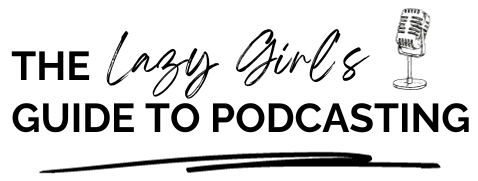
How to Use Podcast Transcripts to Boost Your Website’s SEO
SEO, or Search Engine Optimisation, can seem like the Holy Grail when it comes to boosting your podcast and website in search engine rankings.
But in a world where content is king and Google is more likely to push text or video answers on its first page, how can you help your podcast episode stand out amongst the noise?
The answer could lie in including a transcript of your podcast episode.
Podcast transcripts are not only valuable for accessibility purposes, but they can also significantly boost your website’s visibility in search engine results pages.
By converting audio content into text, search engines can crawl and index your podcast episodes more easily, making them more discoverable to your target audience.
So, in this article, we will explore the many benefits of podcast transcripts and how they can help you reach new heights in your SEO strategy.
Understanding the Importance of Search Engine Rankings
Search engine rankings play a crucial role in the success of any website.
When users search for information online, they typically rely on search engines like Google to provide them with relevant results.
Websites that appear on the first page of search engine results are more likely to receive organic traffic and attract potential customers. Think about it; when was the last time that you went to page 16 of a search engine’s results to find what you were looking for?
This is where SEO comes into play.
Search Engine Optimization (SEO) is the process of optimising your website to improve its visibility and ranking in search engine results pages. By understanding how search engines work and what factors influence their algorithms, you can strategically optimise your website to increase its chances of appearing higher in search results.
How Podcast Transcripts Improve SEO
Podcast transcripts offer a unique opportunity to enhance your website’s SEO.
When you transcribe your podcast episodes, you create a textual representation of your audio content. This text can be crawled and indexed by search engines, allowing them to understand the context and relevance of your podcast episodes.
By including podcast transcripts on your website, you provide search engines with valuable content that can be easily analysed and ranked.
Additionally, podcast transcripts make your audio content accessible to individuals with hearing impairments or those who prefer reading over listening.
This inclusivity not only improves user experience but also sends positive signals to search engines, indicating that your website is valuable and user-friendly.
Podcast transcripts also enable search engines to extract keywords and key phrases from your audio content. These keywords can then be used to match user queries and improve the relevance of your website in search results.
By incorporating relevant keywords into your podcast transcripts, you increase the likelihood of your website appearing in search engine results for related queries. This can drive targeted organic traffic to your website and attract users who are actively seeking the information you provide.
As search engines continue to prioritise user intent and relevance, podcast transcripts can give you a competitive edge in the ever-growing digital landscape.
Benefits of Including Podcast Transcripts on Your Website
Including podcast transcripts on your website offers a multitude of benefits that go beyond SEO. The benefits include:
Improved accessibility
By providing podcast transcripts, you make your audio content accessible to individuals with hearing impairments or those who prefer reading over listening.
This inclusivity demonstrates your commitment to providing a seamless user experience for all visitors to your website.
Increased content reach and enhanced user experience
Podcast transcripts expand the reach of your content by making it available in a different format.
Some users may prefer reading or skimming through text rather than listening to an entire podcast episode. While audio content may require users to listen to the entire episode to find specific sections, transcripts provide a convenient way to navigate through the content and locate relevant information. This improves user experience and encourages users to spend more time on your website.
Repurposing content
Podcast transcripts can serve as a valuable source of content for repurposing.
You can use the transcript to create blog posts, social media snippets, or even eBooks. This not only saves time and effort but also allows you to reach different audiences through various channels. Plus, it saves you a tonne of time in constantly having to think of new ideas for content.
Best Practices for Creating Podcast Transcripts
Creating high-quality podcast transcripts requires careful planning and execution. Here are my top best practices for creating your own podcast transcripts:
Use professional transcription services or tools
My favourite transcription tool is Otter.ai. It has a free plan which gives you 300 monthly transcription minutes. If you need more, prices start from $8.33 USD per month.
I love Otter.ai and find its transcriptions incredibly accurate.
Another transcription tool that I love is Descript. Descript enables you to edit your podcast audio and/or video once recorded using just the transcript. It’s incredibly easy and user-friendly.
Descript also have a free plan, and paid plans start from $12 USD per month.
Read – Descript: The Audio Editing Tool Every Podcaster Needs>>
Proofread and edit the transcripts
Especially names. Always check names!
Once you’ve got your final transcript, make sure that you proofread and edit them for clarity, grammar, and punctuation.
This step is crucial to ensure the accuracy and readability of the transcripts. Avoid jargon or technical terms that may confuse readers and consider adding explanatory notes or links to additional resources where needed.
And as I said, check names. There’s nothing worse than seeing your guest’s name or your own name misspelt!
Format the transcripts for readability
Formatting plays a vital role in improving the readability of your transcripts.
Use paragraphs, headings, and bullet points to break down the content into smaller, digestible sections.
This makes it easier for readers to scan and navigate through the transcripts, enhancing user experience.
Include timestamps and speaker identification
Adding timestamps and speaker identification can make your transcripts more user-friendly.
Timestamps allow users to jump to specific sections of the podcast, while speaker identification (which is simply the name of the speaker that appears before the sentence/paragraph that they speak) helps readers understand who is speaking.
Both of these elements contribute to a better user experience and make your transcripts more engaging.
Optimise for SEO
While creating transcripts, keep SEO in mind. (It’s why we’re doing this after all, right?)
Identify relevant keywords and key phrases related to your podcast topic. Sprinkle these keywords naturally throughout your transcripts, focusing on providing valuable content that answers the user’s intent. Avoid overusing keywords (also known as ‘keyword stuffing’), as this can negatively impact readability and user experience.
Remember, your focus should be on creating valuable content that provides context and answers the user’s intent.
Other SEO tricks you might want to include are:
Using metadata effectively
Metadata plays a crucial role in helping search engines understand the context and relevance of your podcast transcripts.
Include relevant metadata such as title tags, meta descriptions, and alt text for any images or media included in your transcripts.
These elements provide additional information to search engines, increasing the chances of your transcripts appearing in relevant search results.
Structure your transcripts for readability
We’ve already touched on this, but it’s important to remember that you need to properly structure your transcripts using headings, subheadings, and bullet points.
This not only improves the readability of your content but also makes it easier for search engines to crawl and understand your transcripts. Bonus points if you can get creative and use descriptive headings that incorporate relevant keywords to further enhance SEO.
Include internal and external links
Linking to relevant internal and external resources within your transcripts can improve SEO and user experience because your reader will be able to get even more information from you about a topic.
SEO loves internal and external links.
Internal links help search engines navigate your website and understand its structure. External links provide additional context and credibility. Be strategic with your linking, ensuring that the linked resources are valuable and relevant to the content, and if they’re sponsored or affiliate links, make sure that they’re tagged appropriately.
Optimise media files
If your podcast transcripts include embedded media files, such as audio or video clips, optimise them for search engines.
This means using descriptive filenames, captions, and alt text to provide context and improve the discoverability of your media files.
Search engines can read this information and understand the relevance of your media files about your transcripts.
Conclusion
Podcast transcripts offer a powerful way to boost your website’s search engine rankings and enhance user experience.
By converting your audio content into text, you can help bring more people to your podcast and to your website, which will help you to steadily build your audience.
But remember, SEO is just one part of a wider jigsaw when it comes to promoting your podcast. It’s still up to you to promote your episodes on social media, to your newsletter, or whichever other channel you use to engage and grow your podcast audience.





